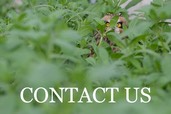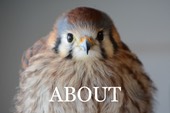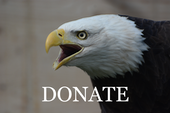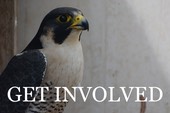Fall Migration is a Challenging Time
This Lincoln’s Sparrow was likely passing through the lower elevations of Umatilla County during fall migration when it struck a window. Sadly it did not survive.

A young Red-tailed Hawk and a young Prairie Falcon also died of their injuries. Another young Red-tailed Hawk and a young Cooper’s Hawk had nonrepairable injuries and were euthanized.
Great Blue Heron
The Great Blue Heron was likely hit by a car. It has a dislocated hip, a fractured ulna and wrist damage. The hip and the ulna have a good possibility of healing. Arthritis may be a factor in the wrist injury. Time will tell. Below, Samantha anesthetizes the heron in preparation for the exam and x-rays.



One Tough Owl
This Great Horned Owl has two broken wings, an injured shoulder and is emaciated, but what an attitude! The right ulna fracture is healed. The left radius fracture is healed. The left ulna fracture is trying to heal so the wing has been immobilized with a bandage. The bird was on the ground long enough for some of the broken bones to heal, at least two weeks. During that time she was only able to catch insects - she had a piece of beetle shell in her mouth. There are lots of reasons why she may not be releasable, but amazing things can happen with tincture of time. We will give her a chance.


One Well-fed Osprey
The average weight for a female Osprey is 1568 grams. This Osprey weighs 1845 grams (just over 4 pounds). To put that in perspective, a big female Red-tailed Hawk weighs 2 1/2 pounds. A male eagle weighs 8 pounds. She was found along a road, so was likely either hit by a car or struck a powerline which was near the road.

The radiograph shows increased density in her left shoulder, subcutaneous air on the left side and increased space between the humerus and scapula on the left side. Hopefully supportive care and cage rest will allow her to make a complete recovery.

Juvenile Northern Saw-whet Owl
This 80 gram owl (less than 3 ounces) was hit by a car in the mountains of eastern Oregon and survived! If you look at the radiograph you will notice more “white” or increased density on the left side of the bird. Amazingly nothing appears to be broken. She is already able to fly in a small space. We will test fly her in a large flight pen the first of the week and hopefully get her back to the mountains soon.


Little Brown Bat
At 3 grams, the smallest patient of the week was a Little Brown Bat. We don’t know how she was injured, but she appears to have trauma on her left side. There don’t appear to be any fractures in her left wing, but it does not lay in a normal position, hence the tape. You can see increased density in her left lung when compared to the right lung.
Birds are generally on their backs when being radiographed and the view is Ventral-Dorsal - the x-ray beam goes from the sternum to the back. Mammals are generally in a Dorsal-Ventral position, so the beam goes from the back to the sternum. That’s why the left and right markers are on the same side of the photos above and below. The owl is on her back and the bat is in a sternal position.


Swainson’s Hawk Release
Volunteers Don and Toni released this adult Swainson’s Hawk just in time for her to migrate. She is likely on her way to Argentina! Toni sent these photos. Thank you Don and Toni.









